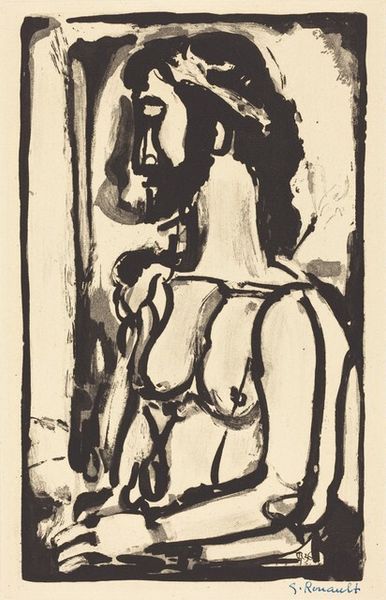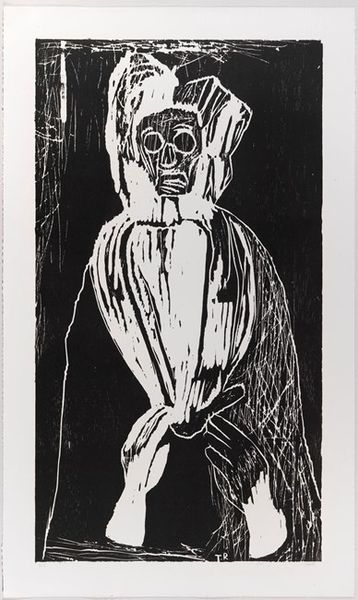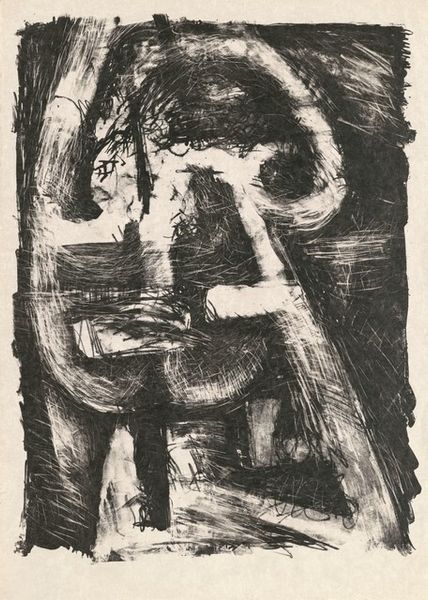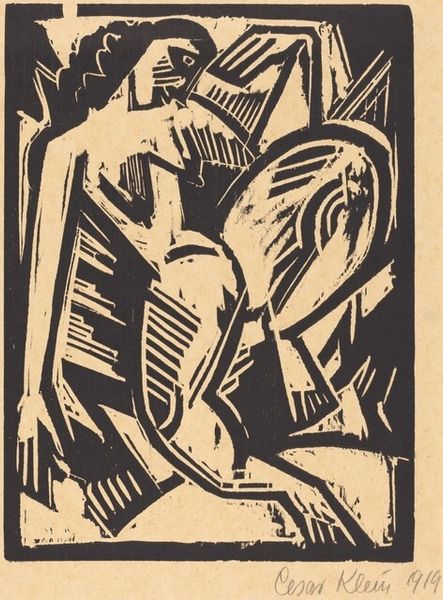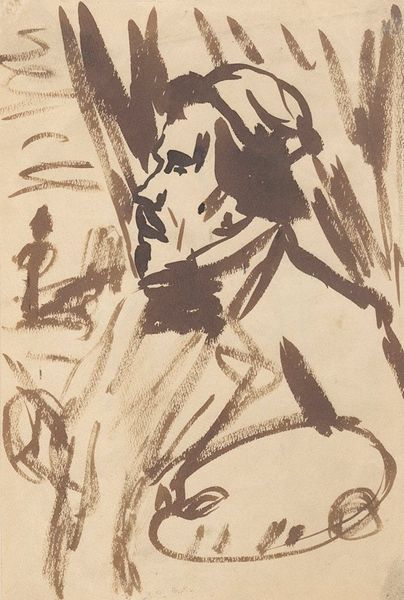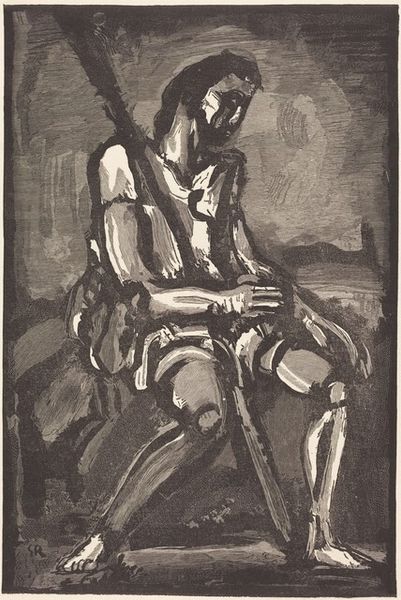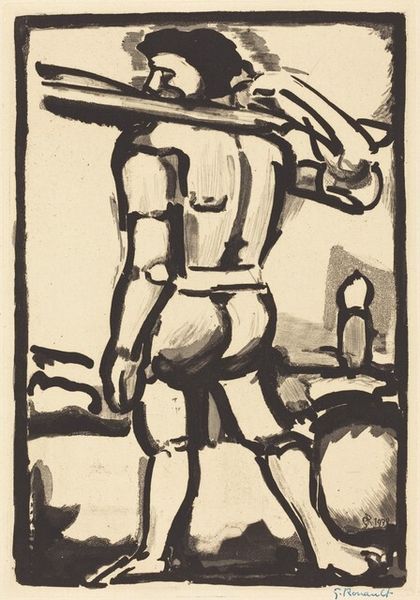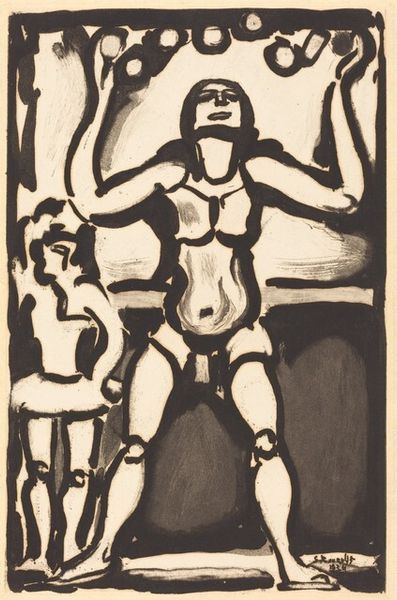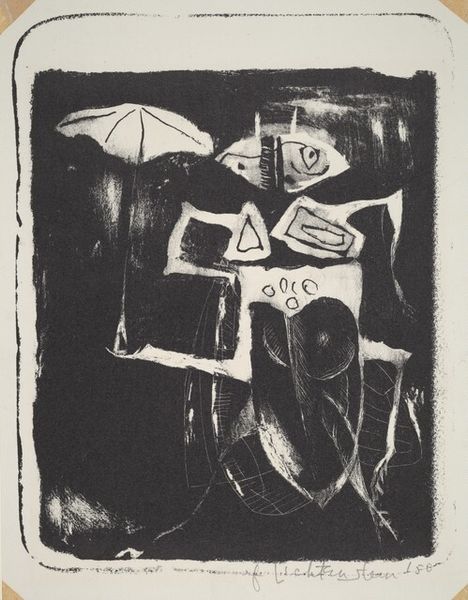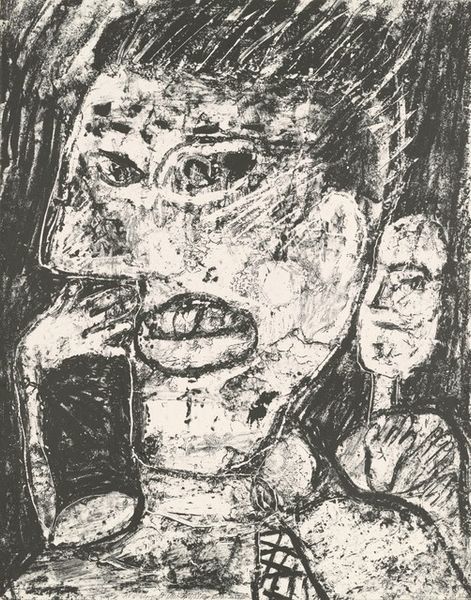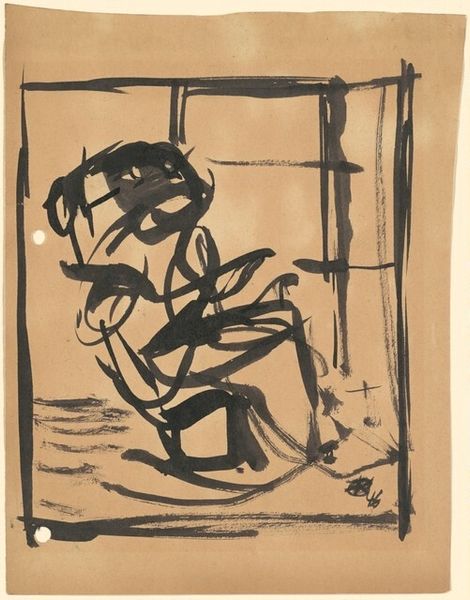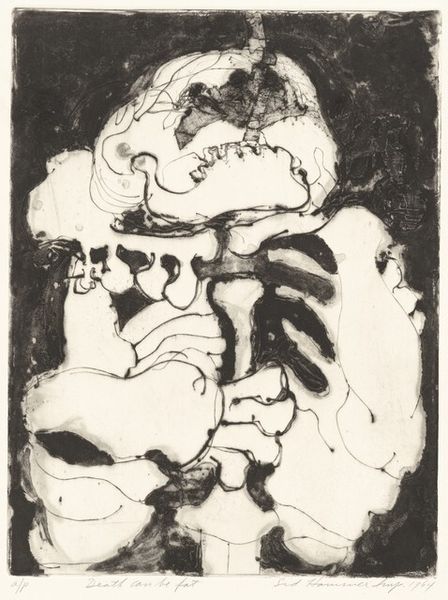
Copyright: National Gallery of Art: CC0 1.0
Curator: Here we have Georges Rouault's "Apache ... Chacal Beni par Toutes les Academies," a print rendered in ink that dates back to 1935. Editor: My first thought? He looks like he's about to give someone a serious talking-to. There's a contained fury in the way he holds that…book? Report? Like he's about to read you the riot act! Curator: Indeed. Rouault’s work often delves into themes of social critique and morality. His heavy use of line and stark contrasts evoke a sense of unease. We should remember the political climate of 1935: anxieties regarding rising fascism and the socio-economic inequalities. This caricature resonates with disillusionment and criticism aimed at figures of authority or institutions. Editor: Absolutely, I get that simmering discontent. It feels intensely personal, though, like Rouault isn't just making a grand statement. It's a portrait of somebody, with that very specific mustache and the bow tie… Did someone ruffle his feathers, or was he always this close to the edge? Curator: What's compelling here is Rouault's position within expressionism. While he embraces the movement's distortion of form for emotional impact, he anchors the caricature in identifiable social types—hinting at lawyers, politicians or figures exploiting power structures. Editor: He’s solid. The strong outlining makes him stand out against what looks like an austere setting. Like this character is stuck, unable to go anywhere outside the box or is he framed. Curator: Let’s also consider the context. During this time, French printmaking was revived in its traditional formats, used often for critical imagery. Artists were invested in using the form as a vehicle for political commentary. Rouault definitely positioned his art with his engagement with current affairs. Editor: It's as though he's trying to capture not just what someone looks like but how they *feel* to be around—the weight of their presence, the pressure they exert. And that’s powerful, I mean can we sense anything from this character if we didn't look closer. Curator: Understanding his use of printmaking during the period offers rich insight into the convergence of artistic intention, societal issues, and material exploration. Editor: Right, it pushes us to think. Makes us a little less complacent and maybe a little more curious.
Comments
No comments
Be the first to comment and join the conversation on the ultimate creative platform.
